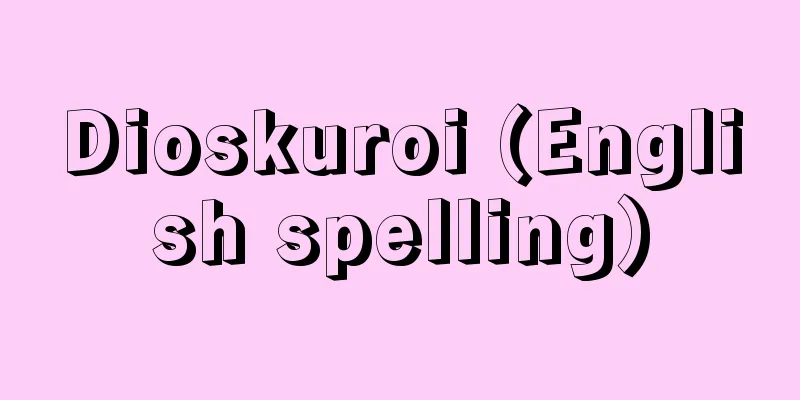Dog Hunt - Inuoumono

|
A martial art in which archers shoot arrows at running dogs from horseback to compete for superiority. It was first recorded in 1207 (Meigetsuki, 1st year of the Shogen era), and was initially held mainly in Kyoto, but was soon introduced to Kamakura, and was actively practiced as a must-have martial art for samurai throughout the Muromachi period. During this time, the traditions were established and the event became larger in scale, and in the Muromachi period, the number of roles increased, with 36 archers and 150 dogs being the standard. The riding ground is surrounded by a fence of 70 archery sticks (1 stick is about 2.27 meters) on all sides, with a small rope with a diameter of 1 stick and a large rope with a diameter of 4 sticks, and a layer of colored sand called the kezurigiwa (edge of the rope) is laid around the outside of the large rope. The archers would ride their horses to the edge of the rope and chase and shoot the dogs that were released within the small rope, into the large rope and even outside of that, and an inspector would judge the winner. When there were 36 archers, they would split into three groups of 12 horses, and each group would shoot 10 dogs, 4 horses in each group, in turn, but traditionally the first one would go unpunished. This would be done 15 times. The archers would wear mukabaki and inui-kote, and would use inui-hikime arrows, which do not kill dogs. The event fell into decline at the end of the Muromachi period, and was revived in the Edo period by the Shimazu family, who held performances in Edo from 1646 (Shoho 3), but it was abolished in the Meiji period. [Takayoshi Miyazaki] Source: Shogakukan Encyclopedia Nipponica About Encyclopedia Nipponica Information | Legend |
|
走る犬を馬上から弓矢で射て優劣を競う武技。文献上の初見は1207年(『明月記』承元元年)で、当初は京洛(けいらく)を中心に催されていたようであるが、その直後には鎌倉にも伝えられており、以後室町時代にかけて、武士の必須(ひっす)の武技として盛んに行われた。この間に故実が整うとともに大規模となり、室町時代には諸役も増え、射手は36騎、犬150匹を本式としている。馬場は弓杖(ゆみづえ)70杖(じょう)(1杖約2.27メートル)四方に垣を巡らし、その中に直径1杖の小縄と、4杖の大縄とよぶ同心円を設け、大縄の外周には鏟際(けずりぎわ)と称する幅1杖半の色砂を敷く。射手は鏟際に馬を乗り入れ、小縄内で放った犬を大縄内、さらにはその外までも追って射、検見(けんみ)が優劣を判定した。射手36騎の場合、12騎ずつ三手に分かれ、一手につき10匹の犬を4騎ずつ交代に射るが、最初の1匹は見逃すのを故実としている。これを15回行う。射手は行縢(むかばき)をはき、犬射籠手(いぬいこて)をさすのが特徴で、矢は犬を殺傷しない犬射蟇目(いぬいひきめ)を用いる。室町時代末期以降は衰退、江戸時代に入って島津家で再興され、同家は1646年(正保3)以来、江戸でもたびたび興行しているが、明治に至って廃絶した。 [宮崎隆旨] 出典 小学館 日本大百科全書(ニッポニカ)日本大百科全書(ニッポニカ)について 情報 | 凡例 |
Recommend
Fisheries Adjustment Regulations - Gyogyouchoseisoku
…The number of vessels and total tonnage of vesse...
New Kokin Wakashu - Shinkokin Wakashu
The eighth imperially commissioned anthology of w...
Emergency Decree - Kinkyuu Chokuri
It is one of the powers of the Emperor recognized ...
Kibbutz Twisted Shell - Kibbutz Twisted Shell
...They scrape off food with their radula and jaw...
Takaba House
This manor was located in Takakusa County, Inaba P...
Tanghinia venenifera (English spelling) Tanghinia venenifera
…There are many types of poisons used, but there ...
Puvva
…The two sects have different scriptures. Accordi...
League
…Because it is the legal unit in the UK, it is ca...
Salinity - Enbun (English spelling)
Salinity is the total amount of solid matter conta...
Spring Garden Pleasure - Shundairaku
The name of a dual key piece of gagaku music. When...
Strehler - Giorgio Strehler
Italian director. Born in Trieste. Graduated from...
Benzalkonium Chloride - Encabenzalkonium
benzyldimethyl(tetradecyl)ammonium chloride. C 23...
Lausitz
...A culture from the middle Bronze Age to the be...
Gaviidae
…A general term for birds of the family Gaviidae,...
Antonio Salieri
Italian composer. Born in Legnago near Verona. He...






![Kobuchizawa [town] - Kobuchizawa](/upload/images/67cb99cb70276.webp)


